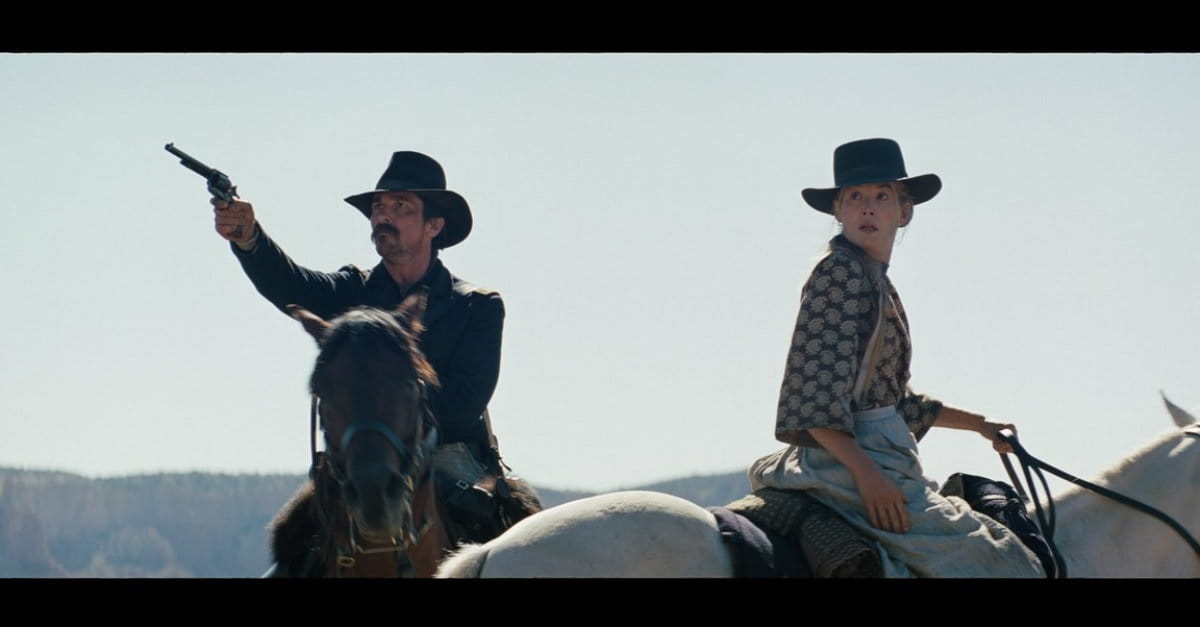Twisted Reasoning Makes for Scatterbrained Secrets
- Annabelle Robertson Entertainment Critic
- Updated Jun 12, 2007

DVD Release Date: June 5, 2007
Rating: Unrated
Genre: Educational/Documentary
Run Time: 87 min.
Director: Jonathan Stack
Narrator: Susan Sarandon
[WARNING: This review includes references to female genitalia which is discussed in terms of symbolism in Secrets of the Code. Parents, please exercise caution with young readers.]
In 2003, The Da Vinci Code was published amid widespread controversy—and angry protests from Christians all around the world. The novel, by author Dan Brown, became the fastest selling adult novel in history and transformed Brown into a billionaire. And although the story that it tells is fiction, religious leaders around the world continue to be outraged by the inscription at the beginning of the book which states that the facts contained therein are “true.”
The Da Vinci Code recounts the story of a murder investigation which led to a series of clues—clues that were supposedly encrypted into a code by Leonardo Da Vinci. When the main characters in the book broke the “code,” they also unearthed a secret that had allegedly been suppressed by religious leaders for thousands of years. The secret? That Jesus Christ had a relationship with, married and impregnated Mary Magdalene, who was also one of his apostles.
In this film, which is based on the book edited by Dan Burstein, narrator Susan Sarandon waxes about the importance of story, then states that Brown’s story is “just a story.” Sarandon then attempts, however, to prove just the opposite. Brown’s story about Mary Magdalene, she insists (along with a host of erudite academics), is actually the “true story” of the New Testament. Brown should therefore be commended—lauded, even—for finally bringing this into the light, and for bringing back “the sacred feminine” to religion once again.
It is this metaphor, the sacred feminine, which dominates the first part of the film. We are escorted into an unnamed forest by author Duncan Caldwell, an American academic. As Caldwell caresses a large rock in the woods, he says, “This is a very erotic experience.” He then points to some indentations in the rock. “This is a vulva,” he says.
Next, Caldwell takes us into some nearby caves, where he again interprets markings on the wall as female genitalia. “We’re within the earth’s vulva,” he says, barely containing the excitement n his voice. “This rock is the membrane between here and the beyond…anyone who doubts this—here’s the proof!”
We then meet a Jewish rabbi who insists that the sexual act is a metaphor for the sacred. “When you’re making love,” he says, “you say, ‘Oh, God.’ You don’t say, ‘Oh, toaster.’ It’s a code for the deepest connection and intimacy.”
“Where do we come from?” asks Sarandon, after this bizarre discourse. She then proceeds to recount some vague religious history, drawing parallels between ancient pagan artwork and Christianity, implying that Christians robbed the pagan traditions of their meaning in order to suppress “the truth.” December 25, for example, was the birthday of the Persian god Methras, before it was usurped and transformed into Jesus’ birthday. Poseidon’s trident became the devil’s pitchfork. And, the pentacle, the symbol of the sacred feminine, became the symbol of witchcraft.
The film proceeds with similar arguments, slowly moving toward the thesis about Mary Magdalene’s pregnancy. The professors all believe that she bore Jesus’ child, after which she supposedly fled to a monastery, where she became a nudist. This “truth,” the film implies, is contained in one of the many hundreds of Gnostic gospels which where hidden and suppressed by religious leaders over the years.
On a whole, the film’s logic is extremely difficult to follow. Interviews jump from subject to subject, seemingly without connection. The arguments don’t even advance the thesis. No evidence is ever presented that really backs up Brown’s alleged “secret”—save ancient gossip. No one even states when Jesus supposedly had this child; how or where the child was raised; or any other basic facts that one would ask about such a claim. Director Jonathan Stack is content to merely state Brown’s thesis, over and over, without presenting any facts. And even though he interviews a host of historians who repeat this allegation, none give any information whatsoever that might be even remotely construed as credible evidence.
The theory hinges on two alleged sources: the Gnostic gospels and claims made by the Knights Templar, who were all slaughtered when they defied the king. As to the first, Stack offers various interviews with religious historians who discuss the existence of the Gnostic gospels, yet never read any passage from them that might back up their claim. Worse, they all conveniently overlook the fact that most of the Gnostic gospels were written three and four hundred years after Jesus died. These accounts were rejected by the church fathers not because they contained information that needed to be suppressed, but because they had no credibility whatsoever—either historical or religious. To claim that something they might contain is truth is therefore tantamount to reading history through the lens of tabloid magazines.
As for the second source, it is absurd to think that those who defied the government and who were killed for their rebellion are a reliable source of information—especially since they have left no record. Might someone someday say the same of David Koresh and his followers?
Stack throws in a few token interviews with evangelicals. Typically, these scholars are edited so as to comment only on issues which do not pose any real argument. Meanwhile, the liberal academics advance their fantastical, heretical and completely unsubstantiated claims.
Even if you can somehow follow this film’s twisted reasoning, its presentation of information is so completely scatterbrained that most people will find it incredibly boring. So even if you are inclined to believe this bunk, you’ll still have to stay awake to hear it.
AUDIENCE: Adults and older teens
DVD EXTRAS:
- Audio commentary by historians
- Interviews
CAUTIONS:
- Drugs/Alcohol: People drink wine at a formal dinner party in France.
- Language/Profanity: Rabbi takes the Lord’s name in vain.
- Sexual Content/Nudity: Various references to female genitalia, with depictions of same in nature and artwork; various artwork showing nursing mother; rabbi discusses lovemaking; professor caresses rock and proclaims that experience is “erotic.”
- Violence: None.














